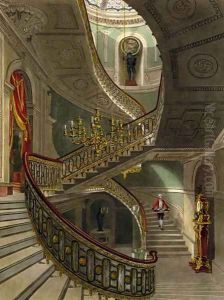R.G. Reeve Paintings
Richard Gilson Reeve, known as R.G. Reeve, was a British engraver and printmaker born in 1799. Reeve was part of a family of engravers and was the son of Richard Reeve, who was also an engraver. His family's artistic environment helped shape his early education and eventual career path in the arts.
Reeve is primarily known for his works in aquatint, a variety of etching used to replicate the effects of watercolor paintings. This technique was popular in the 18th and 19th centuries for its ability to convey rich tones and subtle gradations of light and shade. Reeve's works often depicted sporting and animal subjects, as well as maritime scenes, which were fashionable among the British aristocracy and middle classes during that period.
Throughout his career, R.G. Reeve collaborated with various publishers and other artists. He worked on plates after paintings by contemporary artists, thereby contributing to the dissemination of their works. His engravings were often included in books, periodicals, and as standalone pieces collected by enthusiasts of fine prints.
R.G. Reeve's career spanned a period in British history when the art market was expanding due to a growing middle class. His works catered to the tastes of this audience, who sought to adorn their homes with representations of leisure activities and the British countryside. Reeve's attention to detail and skill in rendering textures and movement in his subjects were well-regarded.
Reeve died in 1868, leaving behind a body of work that continues to be appreciated by collectors and historians for its technical proficiency and its reflection of early Victorian society's interests. His contributions to the field of aquatint engraving are noted for their quality and for the role they played in popularizing this medium during its heyday.
